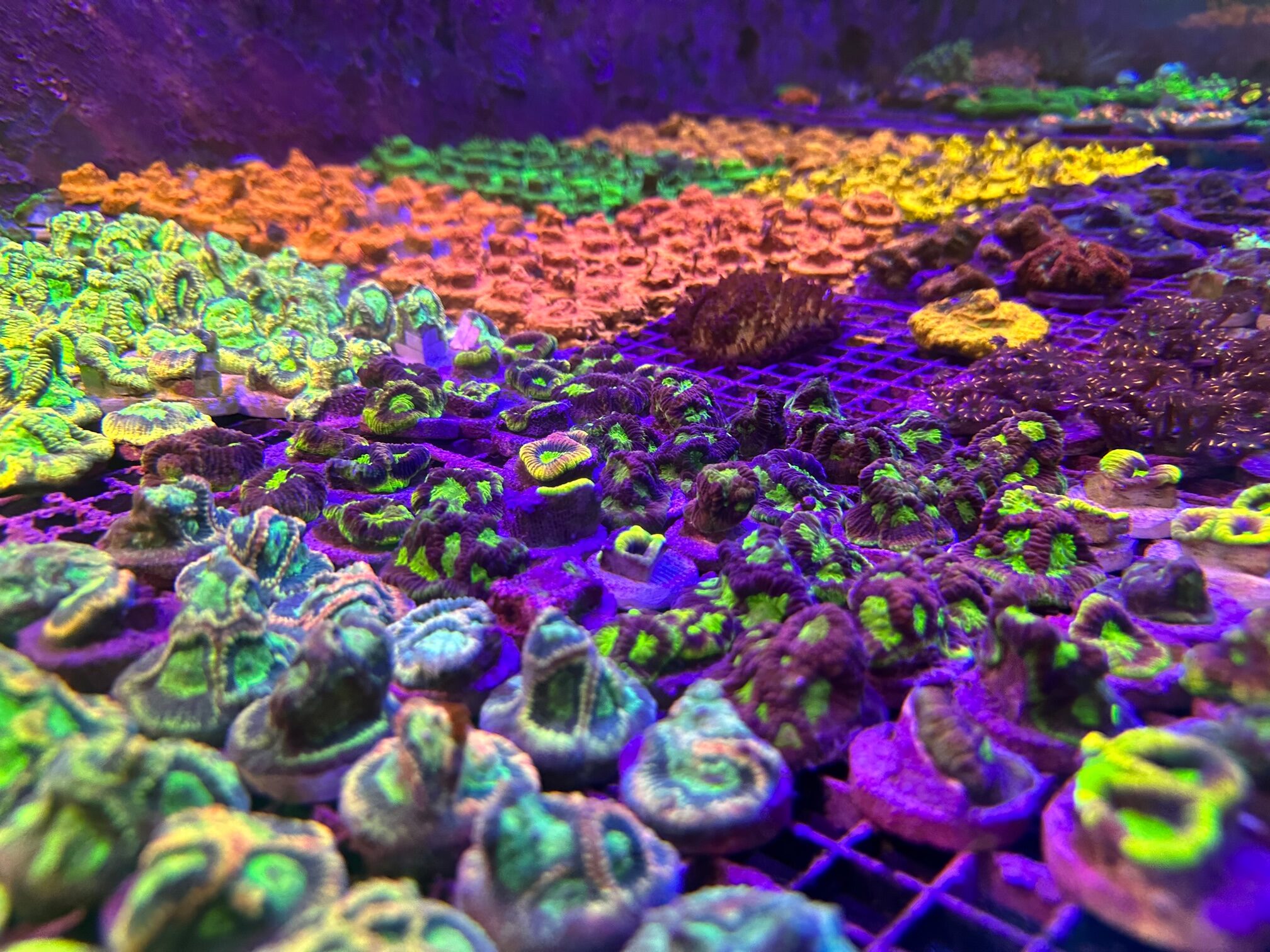Going out for a drink and meeting people who ask what you do for a living is always amusing when you tell them you farm corals. It’s not often you can delve into the inner workings, hardships, and triumphs of this profession with people not familiar with the reef aquarium hobby or industry, so my responses to why this job even exists, who funds it, and if it’s for reef restoration efforts or not are generally about as far into the topic as things get.
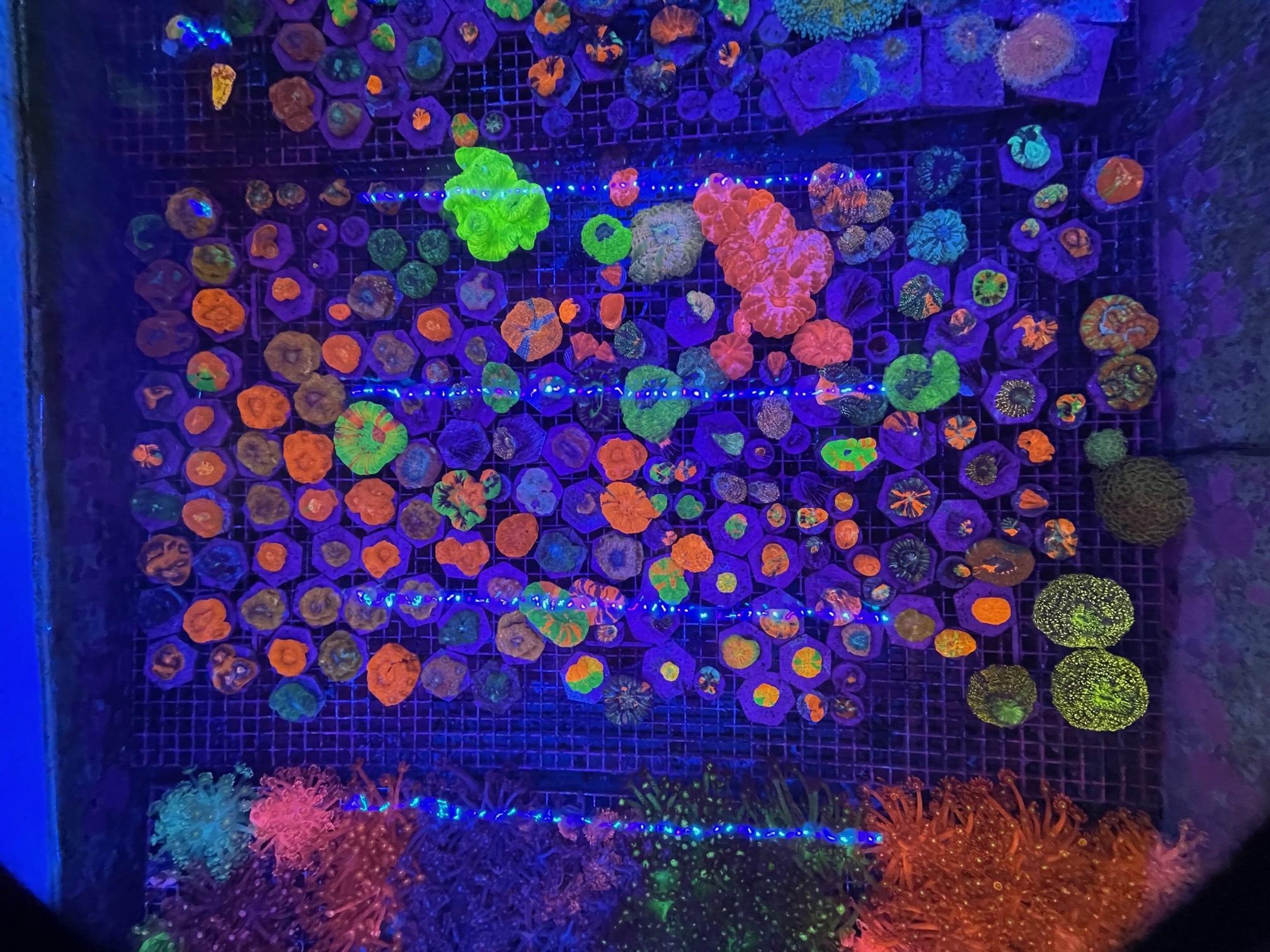
Outsiders, (unlike yourselves as reef keepers,) don’t care much for details about what goes on behind the Facebook posts of bright, shiny corals so please join me for an average work day at Sustainable Reefs.

Having a home reef aquarium is a great way to draw some parallels to coral farms because essentially everything is just BIGGER in some way or another. Bigger skimmers just mean more skimmate, more tanks & equipment mean more maintenance, etc, so ways to make life easy are actively sought after and the systems are always evolving to suit our needs at the time.
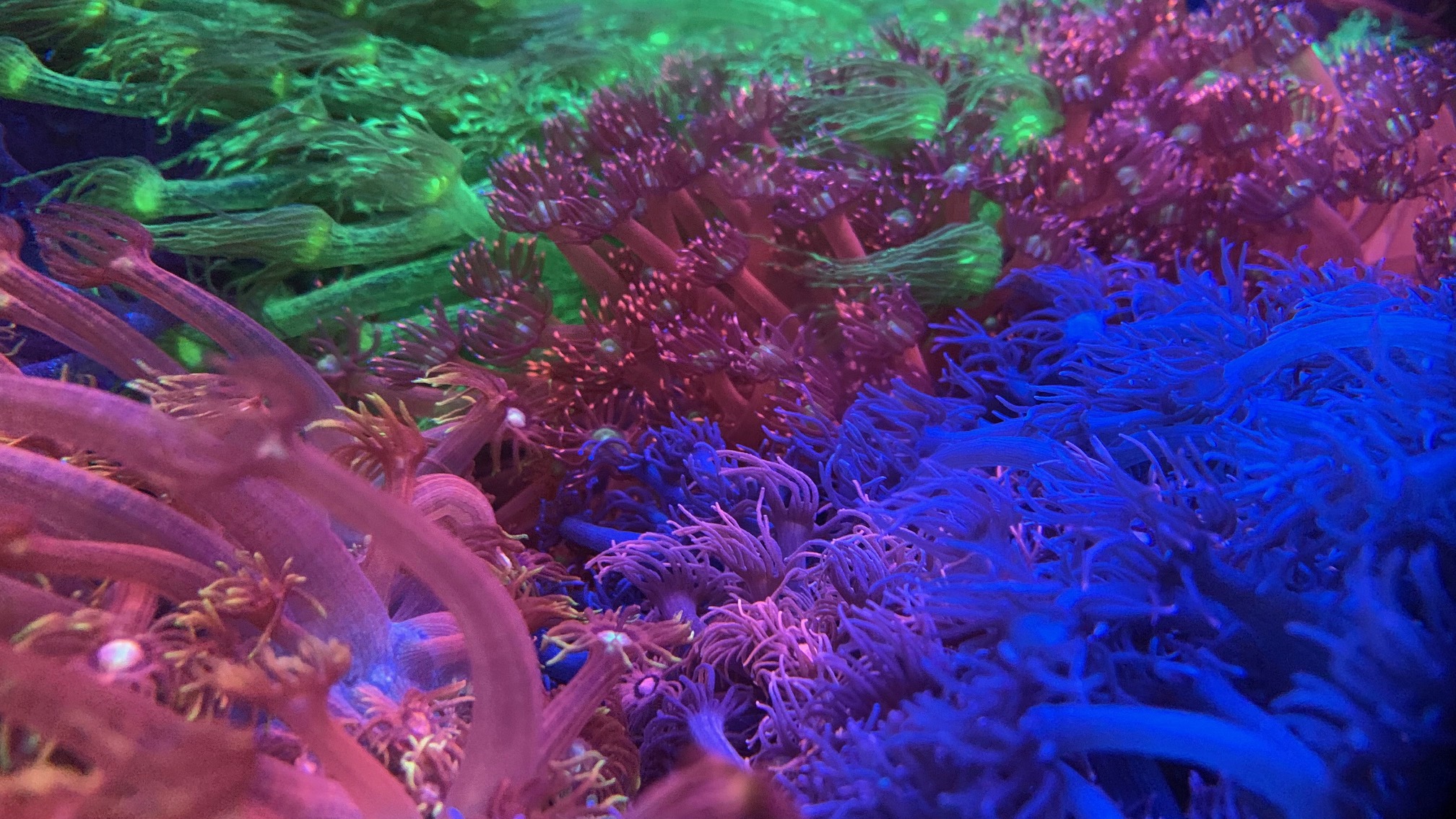
Being a jack of all trades is handy because no one will ever really be a master of this one. You could literally be jumping from construction, fibreglassing, plumbing, running cables, water testing with sensitive equipment, and mixing chemicals in a single day, all on top of fragging.
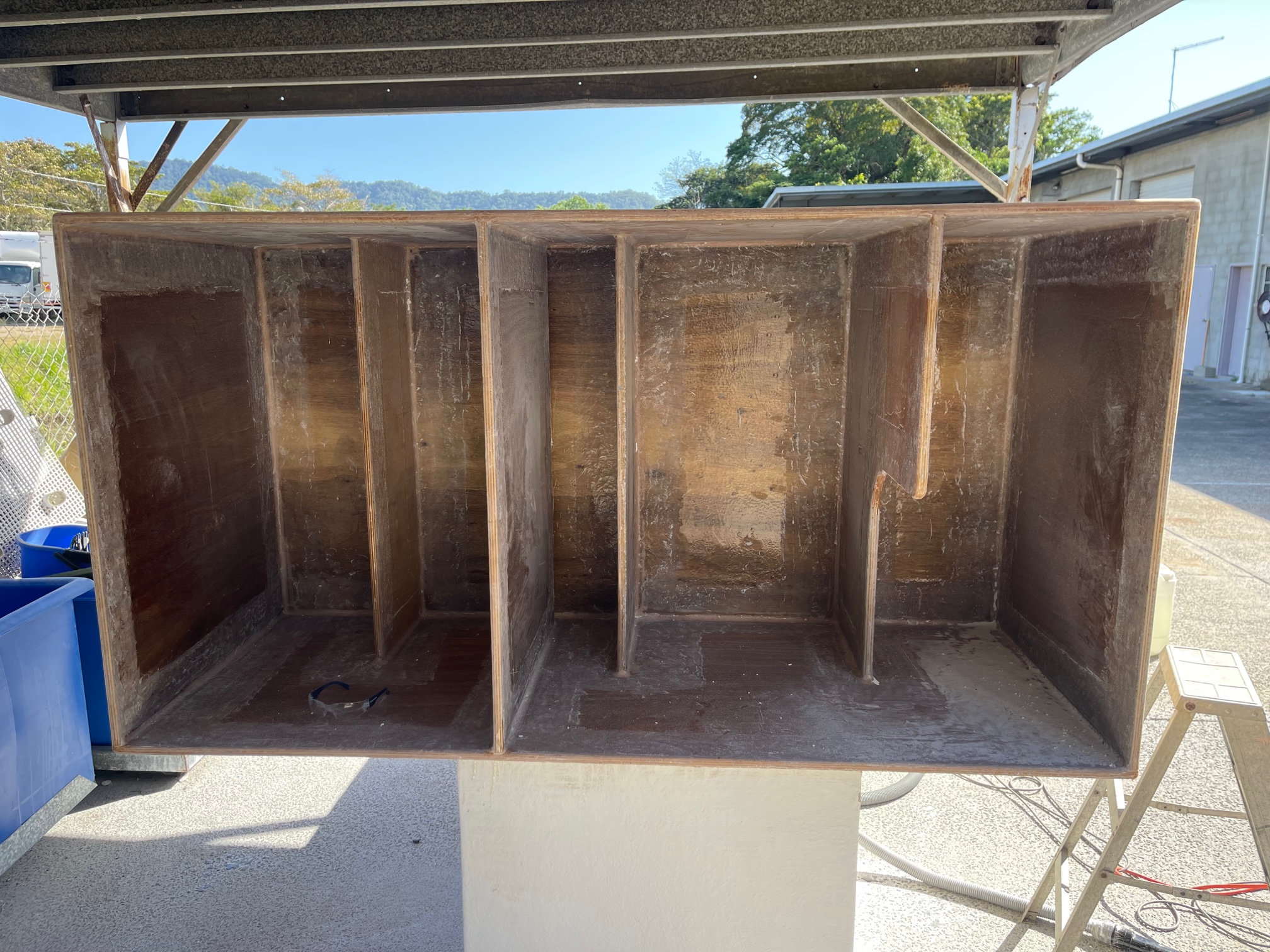
Who loves water testing?!?! I can see the eye rolls… but seriously this is the only way to stay on top of things and it’s one of the biggest parts of the job. Some days the testing is just a couple of parameters like phosphate and nitrate, other days it’s more complex testing using ion-selective probes or taking samples, getting a beer, and letting our friends at TRITON who are only 10 mins away do the testing for us. Using indicator species as the “canary” for further “testing” of certain elements comes with practice so learning to watch your corals closely for changes good or bad comes packaged with testing and water quality. All of the above testing is multiplied across four coral growing systems totaling about 25,000L and multiple test tanks for designing new dosing supplements and foods.

Feeding times are the highlight of each day. Who can resist seeing their corals actively consume something you’ve prepared for them?… which brings me to the revolting part. Having literally millions of mouths to feed, means quite a lot of food preparation. Fresh locally caught seafood and freeze-dried components are made into a forbidden smoothie. It looks almost as bad as it smells but the corals love it so around 50ml of thick slurry per 1000L of system volume is added daily, sometimes more, sometimes less. the feeding is loosely based on water quality. We often do batches of this slurry and freeze it into portions for the week ahead. Reef flavor icy poles!

Fragging is a massive part of the job, it’s the core of farming. For me personally, it’s hard to stay focused sometimes so it’s not uncommon to see me dancing away behind the saw with the tunes up loud. Repetitive or tedious fragging like single Zoanthid polyps or labor-some cuts like Leptastrea or Micromussa lord skeleton takes a while so there is plenty of time alone with my thoughts.

Learning to frag almost every type of coral using techniques to get the best survival rates, highest frag numbers, and the least amount of waste in the least amount of time can be a challenge. Even within the same genus, there are species that require a different method of propagation to ensure the growth rates are optimal. This could mean growing a type of Montipora on an acrylic sheet that the frags can be removed from and glued to a frag tile or having another species of Montipora growing on a ceramic base and cutting the whole encrusted base up into frags. It all depends on the species.

General maintenance gets away from you at home I’m sure, but on a large scale things left unchecked can be catastrophic. We employ the help of flow meters on the pumps that are remotely accessible, this tells us if return pumps are stopped or partially blocked. We have security cameras for visual checks while we are out of the building, leak detection sensors, and a whole host of other devices and probes with double and sometimes triple redundancy in place. There is an uninterruptible power supply for the Apex system so we generally know what’s happening at all times. All of these components for peace of mind require maintenance so we try our very best to keep on top of this.
Some helpful things that reduce the maintenance workload are Skimmers draining directly to bleach drums and then to sewage. Sponges in the overflows to catch as much waste as possible, these are easily removed and washed with a garden hose. Also using calendar reminders on our phones is a great way to help us remember to top up dosing supplements in 200L drums, change media or carbon out or siphon the inevitable detritus collections in any dead spots. Cleaning coralline algae off wave pumps and scraping down tank walls or racks is a never-ending process so we use hydrochloric acid baths to help speed that process up.

Making stock lists, packing orders, and arranging freight is fairly standard practice. The hardest part of coral farming and making stock lists would be knowing what’s popular at the moment and circling this back to fragging corals.
Judging trends by watching what corals are more commonly talked about or if an influencer has recently posted a type of coral they purchased online then it can often become a new craze so we need to prepare for these demands. This could mean focusing our attention on fragging more that week or intentionally leaving them off the latest stock list if we need to grow the ones so we have more mother stock in order to exponentially increase total frag numbers to meet demands in a month or two.


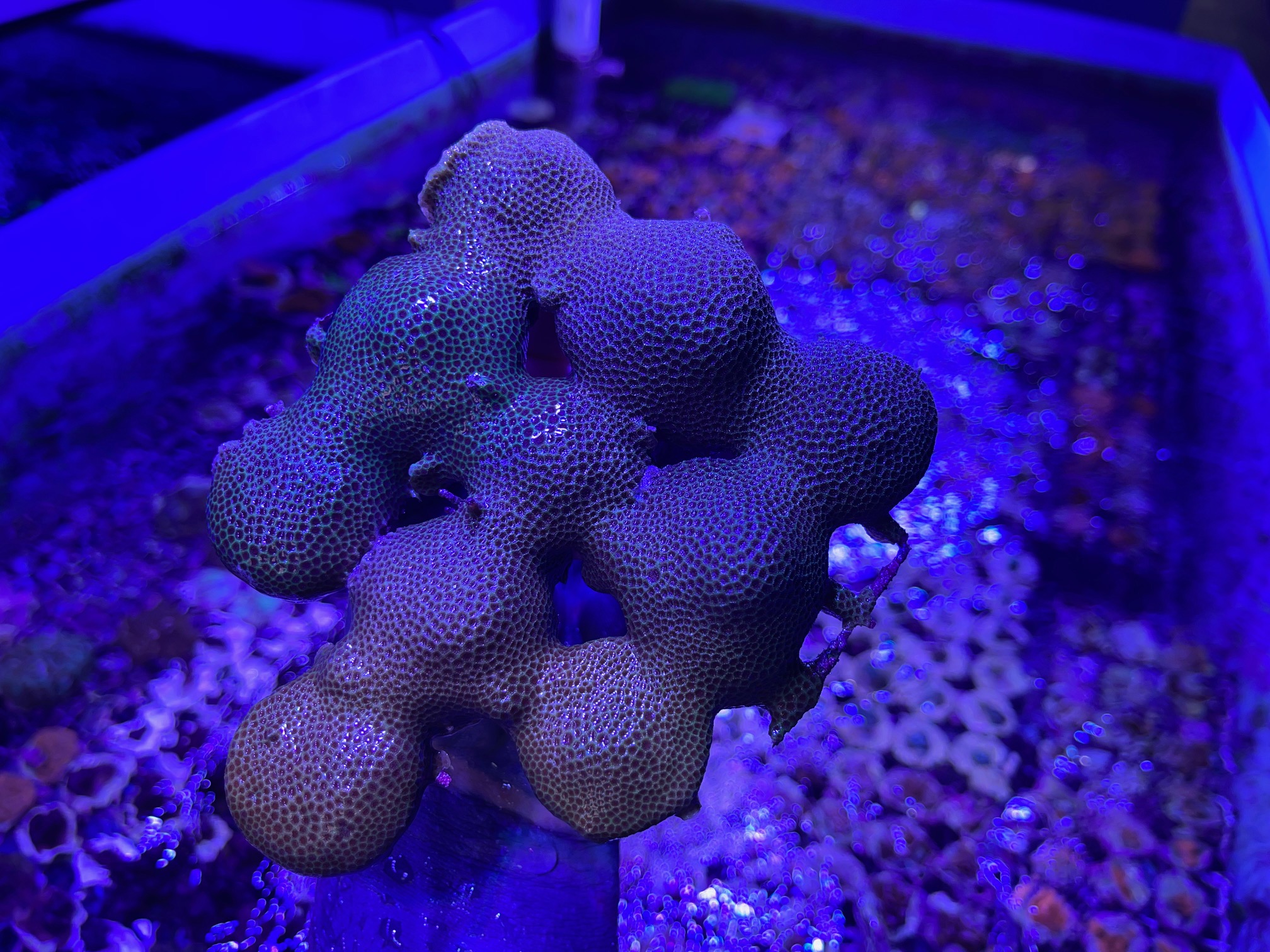
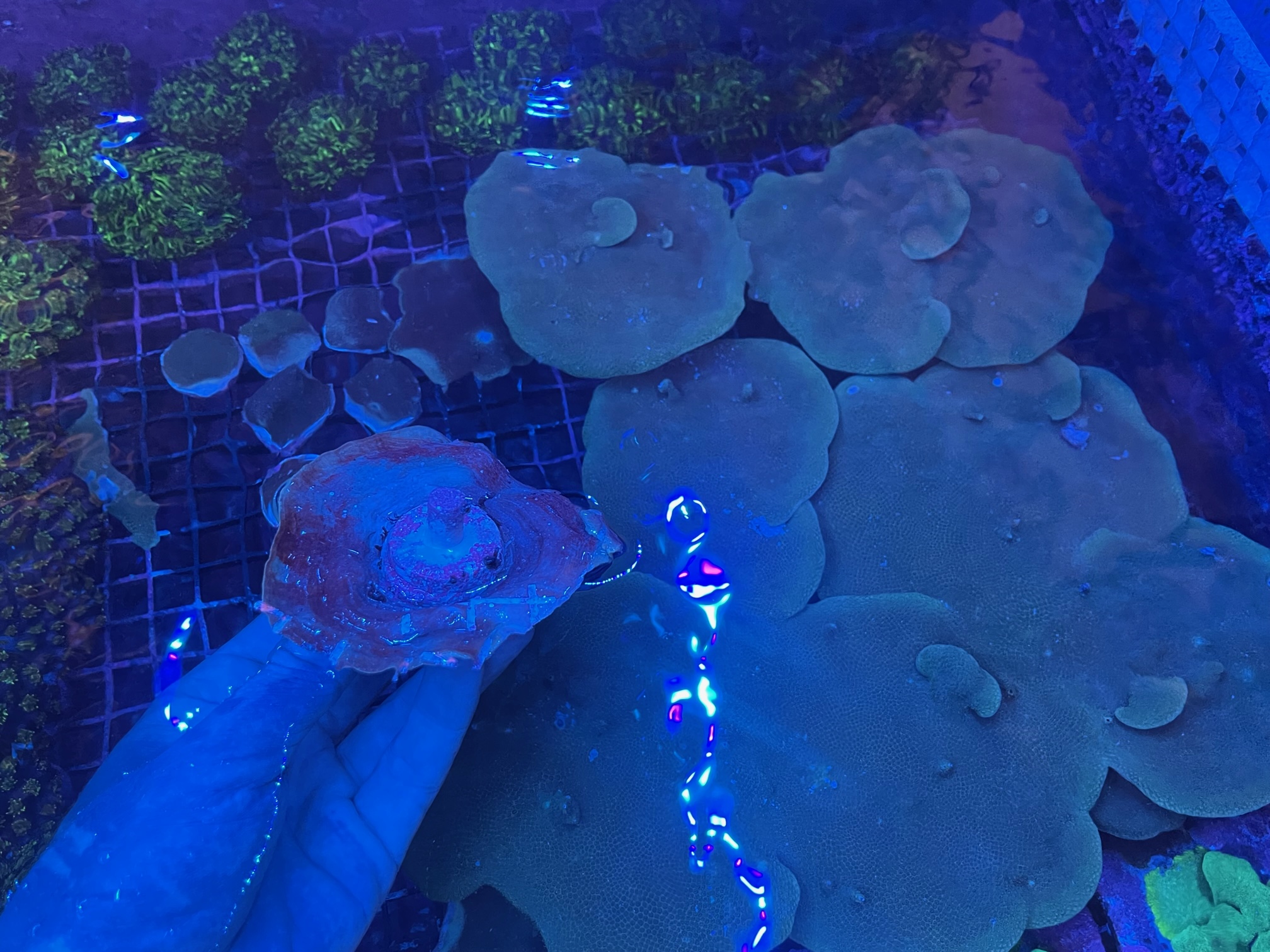
Getting the trends wrong can leave us with a huge amount of “undesirable” corals that are hard to move so we avoid this at all costs. Picking these trends both domestically and globally is even trickier! Other times the demand for certain species is more common abroad, such as “Aussie War Coral” or Favites pentagona. So the species is kept here mainly for exports and during covid for example there was a lack of international exports that required this coral so the frags we kept became overgrown and needed cutting back to maintain the shape and ensure they don’t become difficult to remove off the racks.
The corals that become “unpopular” are generally reduced in price or given away as box fillers until the stock numbers are low enough to maintain just a few frags in each system for redundancy and preservation of the strain without actively trying to increase the frag numbers but instead pruning the excess growth away. This ensures we have the strains ready to go and initiate growth again should more copies of this or that strain be required for an order.
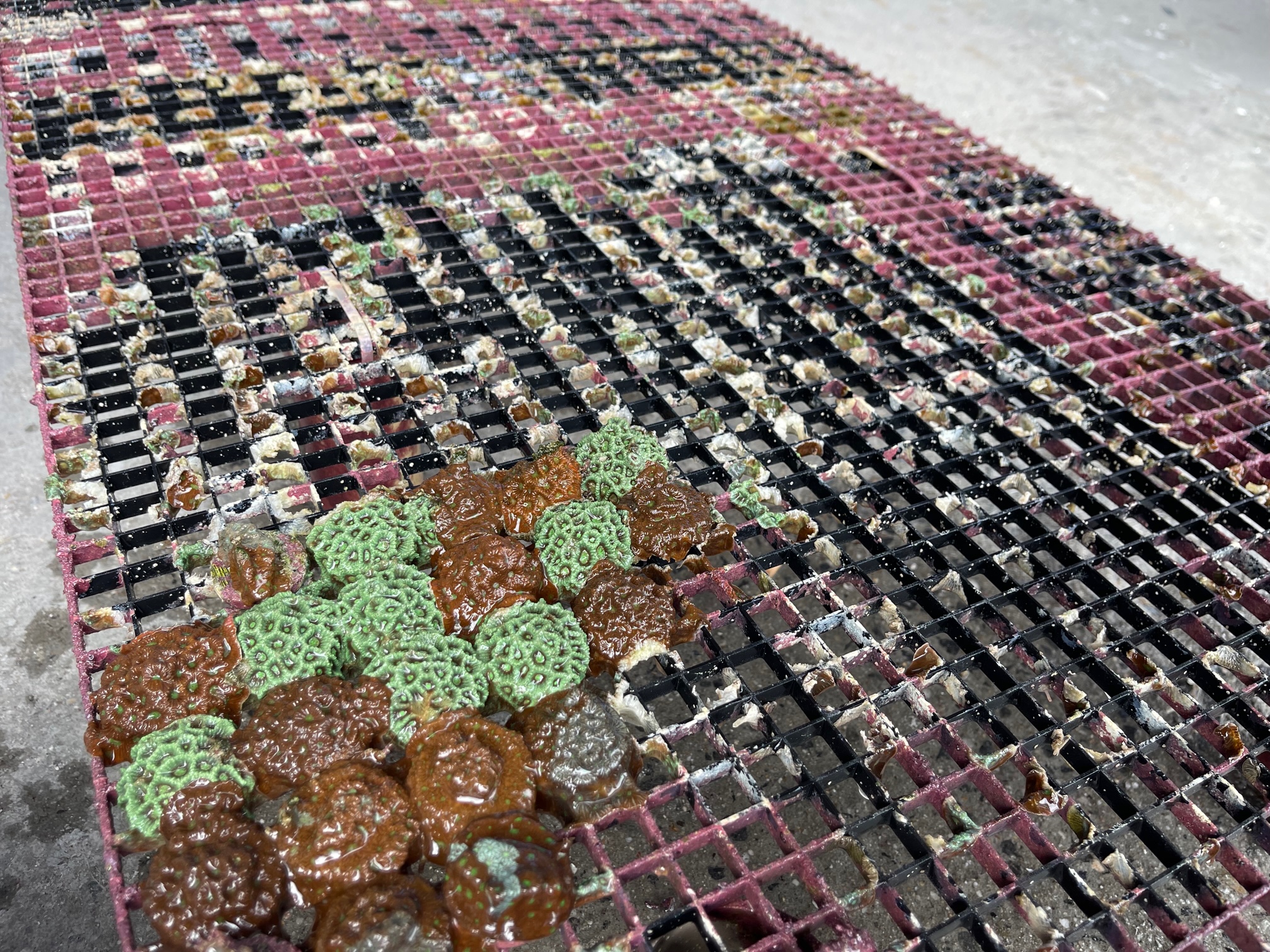
It becomes second nature to be vigilant with pests after just a single disaster. So a good percentage of time is spent on pest inspection and eradication if required.
Constantly moving fish from each grow-out bay to the next bay so they keep their appetite for Aiptasia and don’t turn on corals. We employ the use of the Australian stripey (Microcanthus strigatus) for Aiptasia control as well as manual removal or injection with hydrogen peroxide.
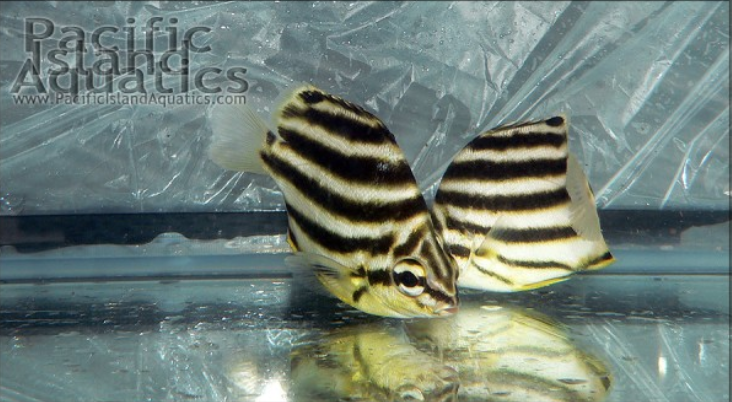
Dipping and quarantine protocols are extremely important for us. Not having the luxury of a constant supply of wild-caught corals to continually feed into the band saw and bone cutters means we need to be extra careful to ensure we do everything we can to prevent coral losses. This plays on our minds daily and I personally find it exhausting to stress over possible catastrophes from pests but I can’t help the thoughts that cross my mind.
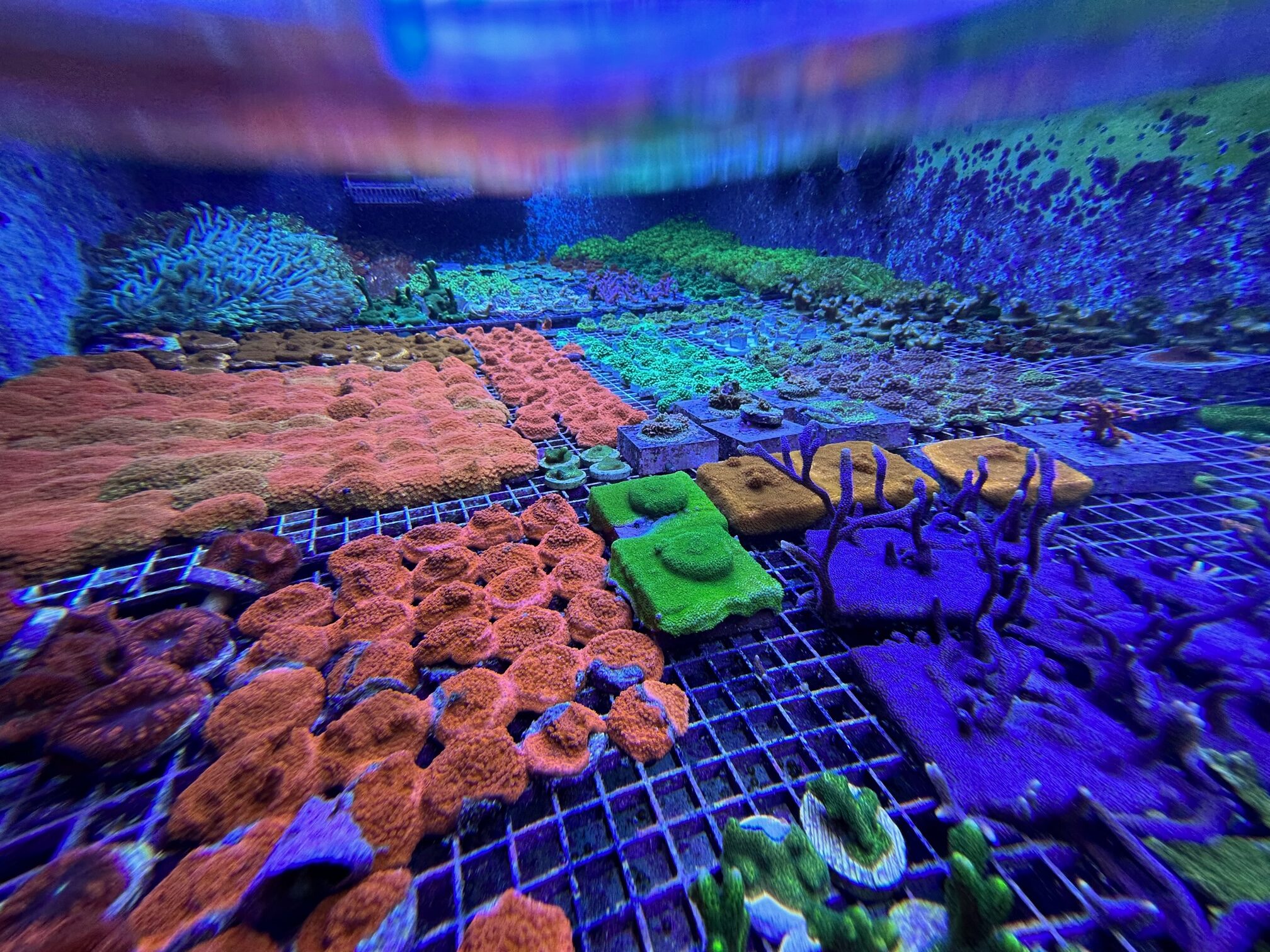
Naming new coral strains that we bring to the market is something that we often do, along with many others in the industry. But it’s also somewhat polarising among hobbyists! A gorilla nipple, a home wrecker, and a space invader sitting next to each other sound absolutely absurd to the people I was having a drink with at the beginning of all this…. But to us, it’s a way of distinguishing strains. Sure we can list 8 different types of Acropora tenuis and 58 types of Zoa by number….. but it’s just so much easier if they are listed in a way that’s easy to catalog and MOST people resonate with the utterly ridiculous names and understand it’s just for fun but serves a valuable function for stocklist production. Please don’t hesitate to let us know your favorite coral strain names or names you think need to be implemented!
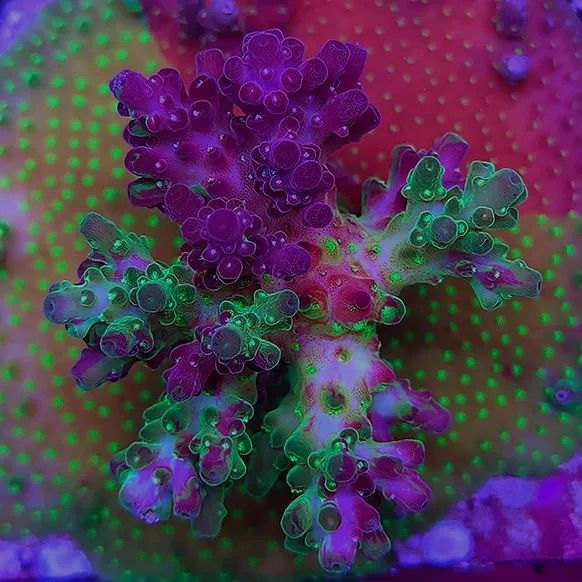
Seeing our “SR babies” in tanks days or even years later gives us a huge kick, a rewarding feeling that is hard to explain. Sure, wild coral collection is how a lot of people get their corals for now and it’s still a very important part of the entire hobby and scientific world but the sense of satisfaction you get from growing a coral and knowing that every cell and every part of your coral has never been in the ocean and then seeing your fellow hobbyists grow it even bigger is a feeling that never gets old.


